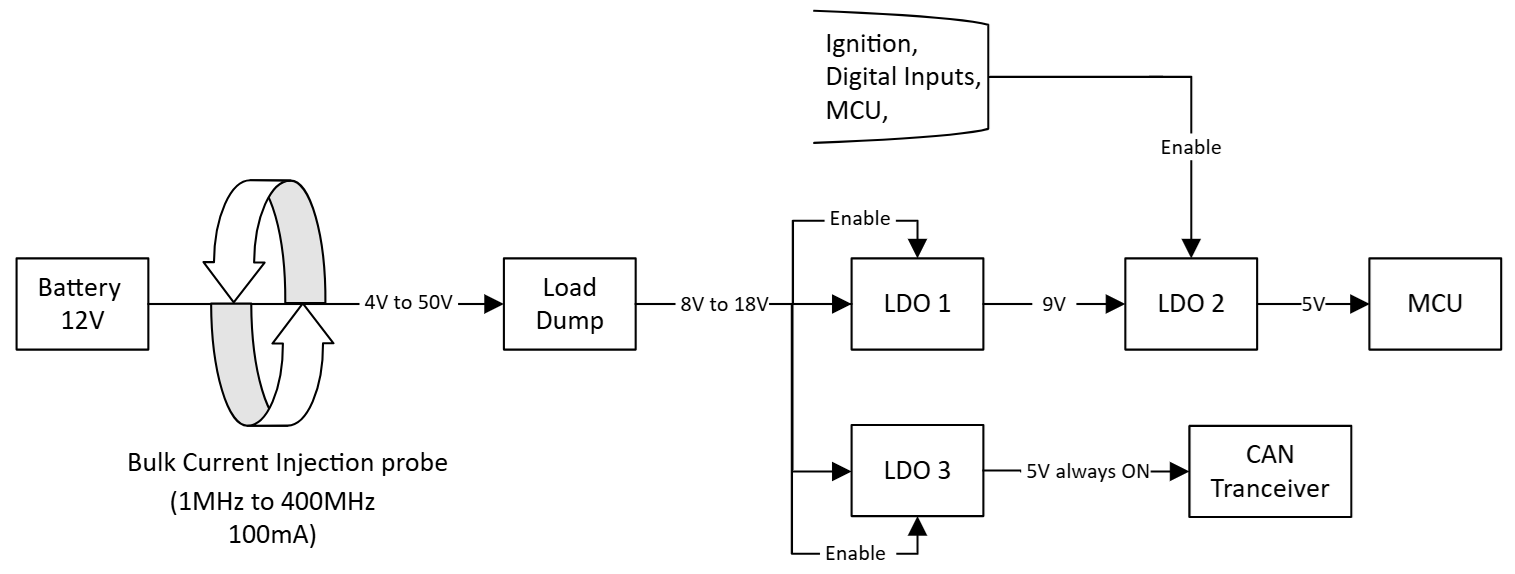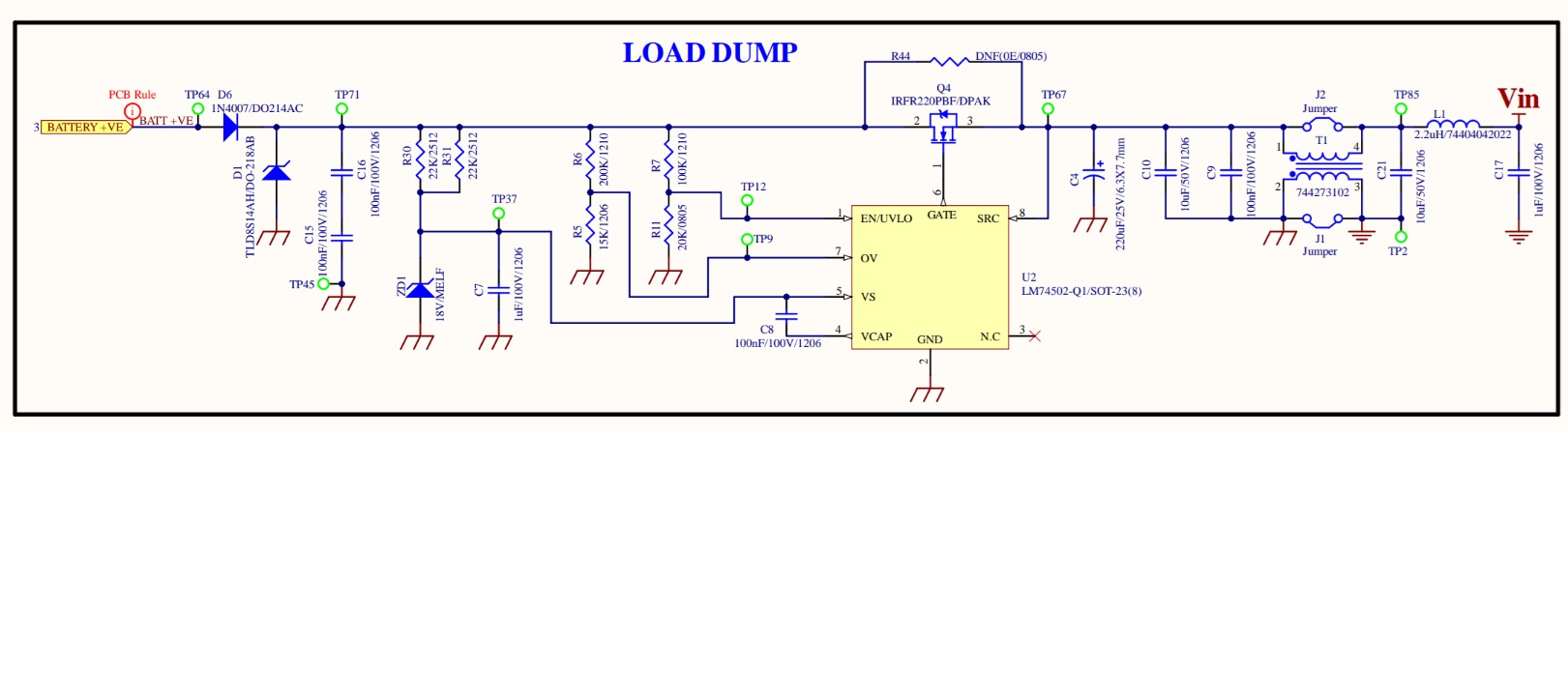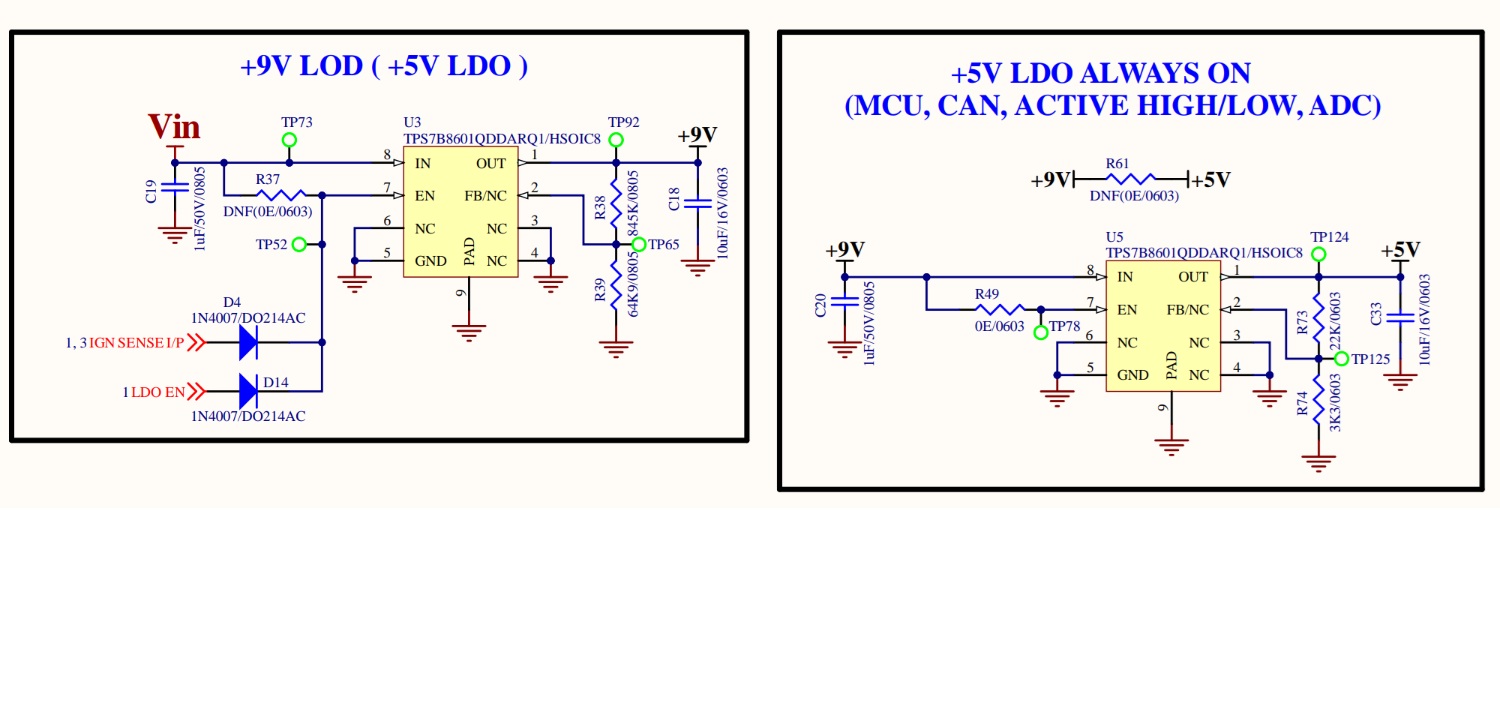Tool/software:
Hello
Below is the block diagram of power section. Product fails (CAN transmission gets interrupted) during BCI testing.
Capacitor used in
- Load dump output is 1uF/50V/1206
- LDO 1 input is 1uF/50V/0805
- LDO 1 output is 10uF/16V/0603
- LDO 2 input is 1uF/50V/0805
- LDO 2 output is 10uF/16V/0603
- LDO 3 input is 1uF/50V/0805
- LDO 3 output is 10uF/16V/0603
What is the possible cause?




